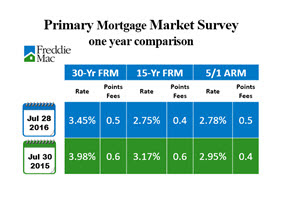How Will It Feel?
It has been said that change is the only constant. Most of the financial experts have been expecting interest rates to increase along with home prices. While homes, in most markets, have definitely seen increases over the past five years, the mortgage rates today are actually lower than they were a year ago. |
If the interest rates were to increase by 1% over the next year while homes appreciated at 6% during the same time frame, a $250,000 home would go up by $15,000 and the payment would be $211.53 more each month for as long as the owner had the mortgage. The increased payments alone would amount to $17,769 for the next seven years.
When facing a decision to postpone a purchase for a year, a legitimate question to ask oneself would be: “how will it feel to have to pay more to live in basically the same home a year from now?”
It is easy to understand that if the price of a $250,000 home goes up by 6%, it increases the price by $15,000. A slightly more difficult concept to realize is that if the interest rate were to go up by ½%, it is approximately equal to a 5% increase in price. A 1% increase in mortgage rates would approximately equal a 10% change in price. This means that if a home goes up in price by 6% and the interest rate goes up by 1%, it is equivalent to the price of the home going up by a little more than 16%.
Use the Cost of Waiting to Buy calculator to estimate what it might cost to wait to purchase based on your own estimates of what interest rates and prices will do in the next year.
